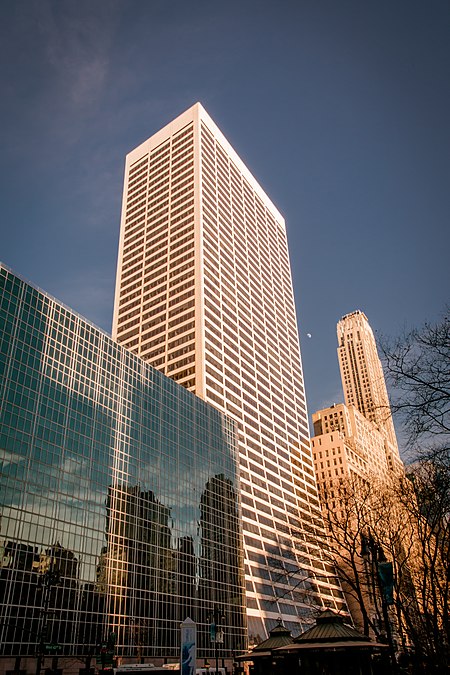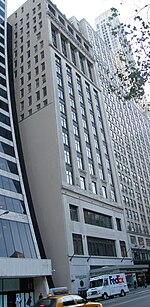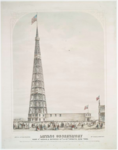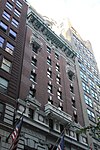W. R. Grace Building

The W. R. Grace Building is a skyscraper in Manhattan, New York City. The building was designed principally by Gordon Bunshaft, and completed in 1972. The building was commissioned by the W.R. Grace Company, and was also used by the Deloitte & Touche, LLP. The building is located at 1114 Sixth Avenue, but the main entrance is on 42nd Street, between Fifth and Sixth Avenues. It overlooks Bryant Park and the New York Public Library's main branch. The building size has approximately 1.518 million square feet (141,000 m2) that are rentable, and sits on a site approximately 100 by 442 feet (30 by 135 m). The Grace Building is located on the former site of Stern's flagship department store and headquarters. Tenants include Bain & Company. The Michelin-starred restaurant Gabriel Kreuther is located in its lobby as well as a sister chocolate store.
Excerpt from the Wikipedia article W. R. Grace Building (License: CC BY-SA 3.0, Authors, Images).W. R. Grace Building
6th Avenue, New York Manhattan
Geographical coordinates (GPS) Address External links Nearby Places Show on map
Geographical coordinates (GPS)
| Latitude | Longitude |
|---|---|
| N 40.754722222222 ° | E -73.9825 ° |
Address
W. R. Grace Building
6th Avenue 1114
10019 New York, Manhattan
New York, United States
Open on Google Maps









